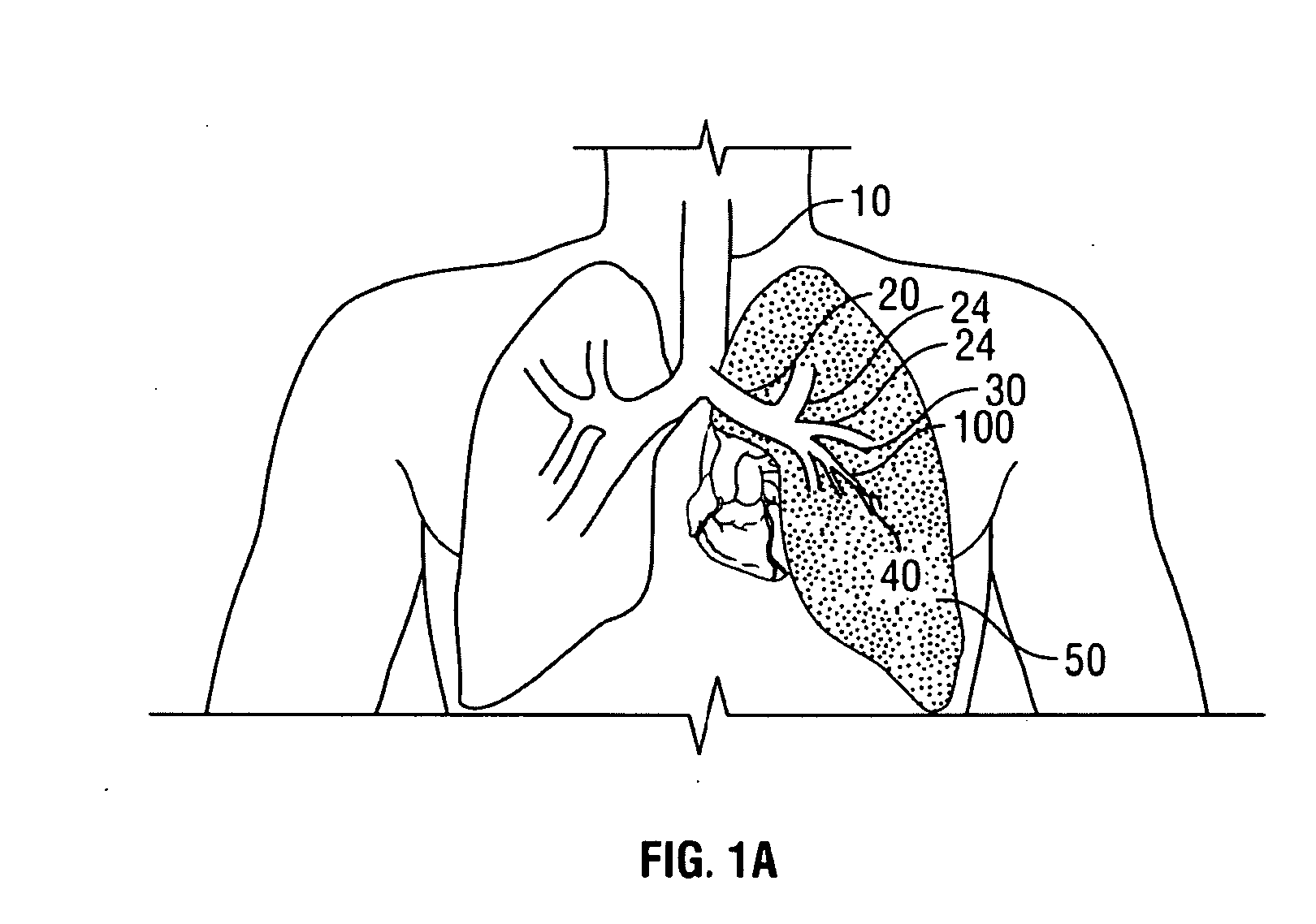Extrapleural airway device and method
a technology of extrapleural airway and gaseous exchange, which is applied in the direction of prosthesis, tracheae, application, etc., can solve the problems of copd-afflicted individuals, loss of muscle strength, and inability to perform common daily activities, so as to improve the gaseous exchange in the lungs.
- Summary
- Abstract
- Description
- Claims
- Application Information
AI Technical Summary
Benefits of technology
Problems solved by technology
Method used
Image
Examples
Embodiment Construction
[0042]Described herein are methods and devices for improving the gaseous exchange in a lung. More particularly, a method is described for improving the gaseous exchange in a lung of an individual having chronic obstructive pulmonary disease. The inventive method generally includes fluidly connecting the lung with an extrapleural airway such as the trachea using a conduit. Once the tissue structures are in fluid communication, gas may flow or pass directly from the parenchymal tissue of the lung to the extrapleural airway such as the trachea via the deployed conduit. By “pass directly” from the lung to the extrapleural airway it is meant that at least some volume of gas flows direct from the inner tissue of the lung to the extrapleural airway without passing through typical flow pathways such as the bronchioles, bronchus, etc. which may be constricted or otherwise flow-resistant. Also, by “extrapleural airway” it is meant any airway or portion of an airway that is outside of the pleu...
PUM
 Login to View More
Login to View More Abstract
Description
Claims
Application Information
 Login to View More
Login to View More - R&D
- Intellectual Property
- Life Sciences
- Materials
- Tech Scout
- Unparalleled Data Quality
- Higher Quality Content
- 60% Fewer Hallucinations
Browse by: Latest US Patents, China's latest patents, Technical Efficacy Thesaurus, Application Domain, Technology Topic, Popular Technical Reports.
© 2025 PatSnap. All rights reserved.Legal|Privacy policy|Modern Slavery Act Transparency Statement|Sitemap|About US| Contact US: help@patsnap.com



